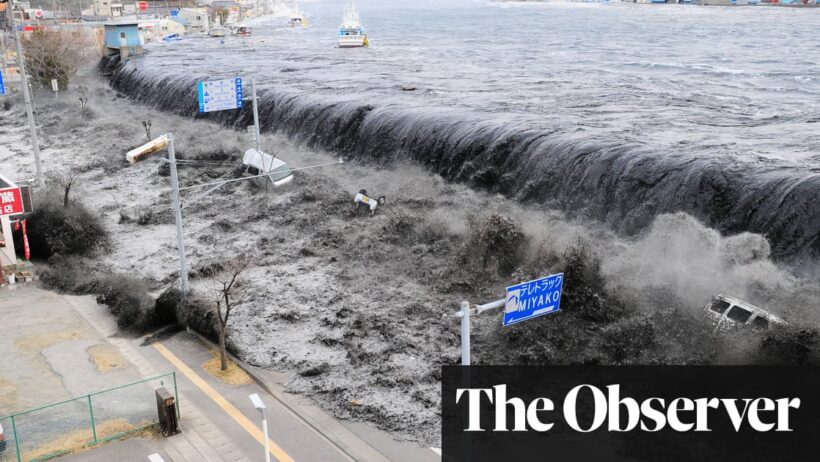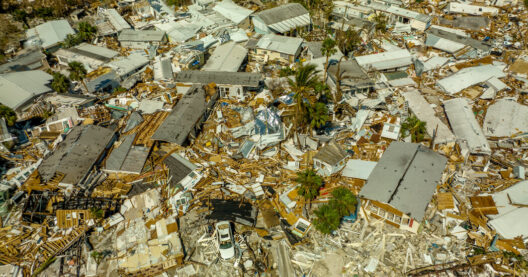The relationship between natural phenomena, such as earthquakes, and climate change is both intricate and consequential. While traditional discourse often emphasizes anthropogenic activities as the primary catalyst behind climate change, the potential for seismic events to influence climatic patterns should not be underestimated. The crux of the matter lies not just in the prevalence of earthquakes, but their capability to invoke changes that ripple through ecological and atmospheric systems. This exploration intends to unearth the seldom-discussed avenues through which earthquakes might catalyze shifts in climate.
To embark on this discourse, it is essential to delineate the foundational elements of both earthquakes and climate change. Earthquakes typically result from the tectonic movement of parallel crustal plates, releasing energy in the Earth’s lithosphere. This sudden release generates vibrations that can have devastating effects on the surface and underlying geological layers. Conversely, climate change is predominantly characterized by the long-term alteration of temperature and typical weather patterns within a given region, primarily driven by greenhouse gas emissions from human activities.
At first glance, the interplay between these two phenomena may appear tenuous at best. However, closer investigation reveals compelling instances wherein seismic activities may invoke changes significant enough to influence climatic patterns. An initial consideration is the phenomenon of volcanic eruptions that can coincide with or result from large earthquake events. Volcanoes, when they erupt, release vast quantities of ash and gases, including carbon dioxide and sulfur dioxide. These emissions can have a profound effect on atmospheric conditions, contributing to both short-term cooling and longer-term climatic alterations. For example, the eruption of Mount Pinatubo in 1991 resulted in a substantial decrease in global temperatures due to the aerosols emitted, which reflected sunlight away from Earth.
Moreover, earthquakes can disrupt existing ecosystems and water tables, thereby influencing local weather patterns. The aftermath of seismic activity often includes the alteration of rivers and lakes, resulting in changes in evapotranspiration rates. This mechanistic alteration can reverberate through regional climates, potentially inducing droughts or increased precipitation in adjacent areas. For instance, consider a scenario where an earthquake generates a new waterway; the consequent evaporation from that waterbody could lead to enhanced moisture levels, spiraling into altered rainfall patterns downstream.
Furthermore, consequences of earthquakes extend into the realm of human-induced climate change. Displacement of communities, destruction of infrastructure, and subsequent increases in carbon emissions due to reconstruction efforts are pivotal. Post-earthquake rebuilding often necessitates significant energy consumption, typically reliant on fossil fuels. Thus, the seismic event inadvertently contributes to the broader tapestry of greenhouse gas emissions, exacerbating an already fragile climate dynamic.
Beyond the physical contributions to climate change, the psychological and socio-economic impacts of earthquakes cannot be overlooked. Communities faced with the aftermath of a significant earthquake may experience an upheaval in priorities, shifting their focus away from environmental sustainability towards immediate survival and reconstruction. This pivot can lead to policies that inadvertently enhance carbon footprints, as governments look to expedite recovery at the cost of ecological considerations.
Advocacy for climate change mitigation and earthquake preparedness must converge in strategic planning. While it is paramount to assiduously address the primary drivers of climate change, the potential for earthquakes to influence climatic outcomes necessitates a dual approach. Integrating seismic resilience into climate action plans ensures that human activities are not only adaptable to the changing climate but are also cognizant of the earth’s geophysical dynamism. Initiatives must address both the prevention of emissions through sustainable practices and the recognition of natural disaster consequences in broader environmental assessments.
Undeniably, the notion that earthquakes could potentially precipitate changes in climate challenges traditional paradigms. This possibility elevates the conversation beyond anthropogenic influences, requiring a holistic understanding of Earth’s interconnected systems. The systematic approach should focus on enhancing the resilience of ecosystems, utilizing scientific advances to anticipate and mitigate risks posed by earthquakes. Through dedicated research, we can demystify the complex mesh of causal relationships among geological events and climatic phenomena. A nuanced comprehension of these intersections can aid policymakers in crafting effective strategies that address both immediate responses to seismic activity and long-term climate stability.
In conclusion, the notion that earthquakes could contribute to climate change, albeit indirectly, invites a thorough reevaluation of our understanding of environmental challenges. Evidently, while earthquakes may not be a principal driver of climate change, their ability to influence climatic systems, either through geological disruptions or socio-economic repercussions, presents an essential aspect of environmental discourse. Acknowledging this complexity permits a more robust approach toward climate change adaptation and resilience, ultimately equipping societies to better navigate the multifaceted trials posed by both seismic events and an evolving climate.







